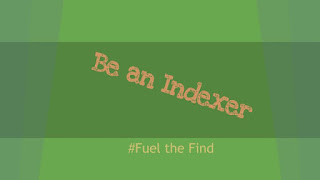Many of my clients come to Germany to find their ancestor’s graves. Unfortunately, in Germany graves are cleared after a few decades (20 to 30 years) to make room for new graves. Therefore, you will hardly ever find graves of your ancestors, who died some 100 years ago.
Berlin-Friedrichshain, Friedhöfe Friedenstraße / Landsberger
Allee ©Angela Monika Arnold
Also,
sometimes when a grave is cleared, the name is mentioned on a family
gravestone, but this does not mean that this person is actually buried there. Actually
they might even have been buried in a different town.
 If the
family had a large monument next to a cemetery wall it is often kept and
sometimes even sold to other families who keep it and pay for the maintenance; they
either to use it as a place of burial for their own family or just to see to it
that it is saved.
If the
family had a large monument next to a cemetery wall it is often kept and
sometimes even sold to other families who keep it and pay for the maintenance; they
either to use it as a place of burial for their own family or just to see to it
that it is saved.
Berlin-Friedrichshain, Friedhöfe Friedenstraße / Landsberger
Allee ©Angela Monika Arnold
Also often
graves of famous people are taken care of by the municipality, this grave, for
example, is kept as a grave of honor.
Berlin-Kreuzberg, Friedhöfe vor dem Halleschen Tor ©kvikk
Therefore,
before you come to Germany, it may be wise to check with the local church or,
if the cemetery belongs to the local community, with the so called Friedhofsamt. You will find the way to
contact them through the website of the municipality. Some municipalities (for
example Berlin) do charge a fee for this kind of information, others do not.
Also be aware that it might take time until they answer, in some parts of
Berlin it can take about 6 months as they have to take care of burials as well,
which, obviously, has first priority.
 Sometimes
the cemetery has seized to exist. In the past the cemetery often was close to or
even next to the church. The graves were marked with either stones or wooden
crosses that simply were destroyed due to the weather and then removed. Later a
new cemetery was set up but the graves were not moved so you will be walking over
unmarked graves.
Sometimes
the cemetery has seized to exist. In the past the cemetery often was close to or
even next to the church. The graves were marked with either stones or wooden
crosses that simply were destroyed due to the weather and then removed. Later a
new cemetery was set up but the graves were not moved so you will be walking over
unmarked graves.The church of Groß Leppin, Brandenburg ©Ursula C. Krause
However,
sometimes, if you are lucky, a new cemetery is set up and the old one in not cleared and falls
into a deep sleep. Maybe the grass it cut, maybe some stones are removed, but you
will still see that there once was a cemetery.
The old
cemetery of Groß Leppin, Brandenburg, situated on the Mühlenberg ©Ursula C.
Krause
It is different
for Jewish cemeteries. These graves were principally not cleared, however, many
Jewish cemeteries were desecrated and destroyed during the Third Reich.
Sometimes the cemetery ‘simply’ was destroyed and the tombstones knocked over,
sometime the tombstones were taken and used for road construction (which was
actually done with Christian German tombstones in Poland after the war). Today,
many people are involved in saving the Jewish cemeteries and honoring those who
were once buried there and most cemeteries are under preservation.
Even if you
do not find the graves of your ancestors, do take a look at the local cemetery,
often they are a beautiful place to sit down and simply take a break from all
the noise and the hurry.
Südwestkirchhof
Stahnsdorf, Brandenburg ©A. Savin























